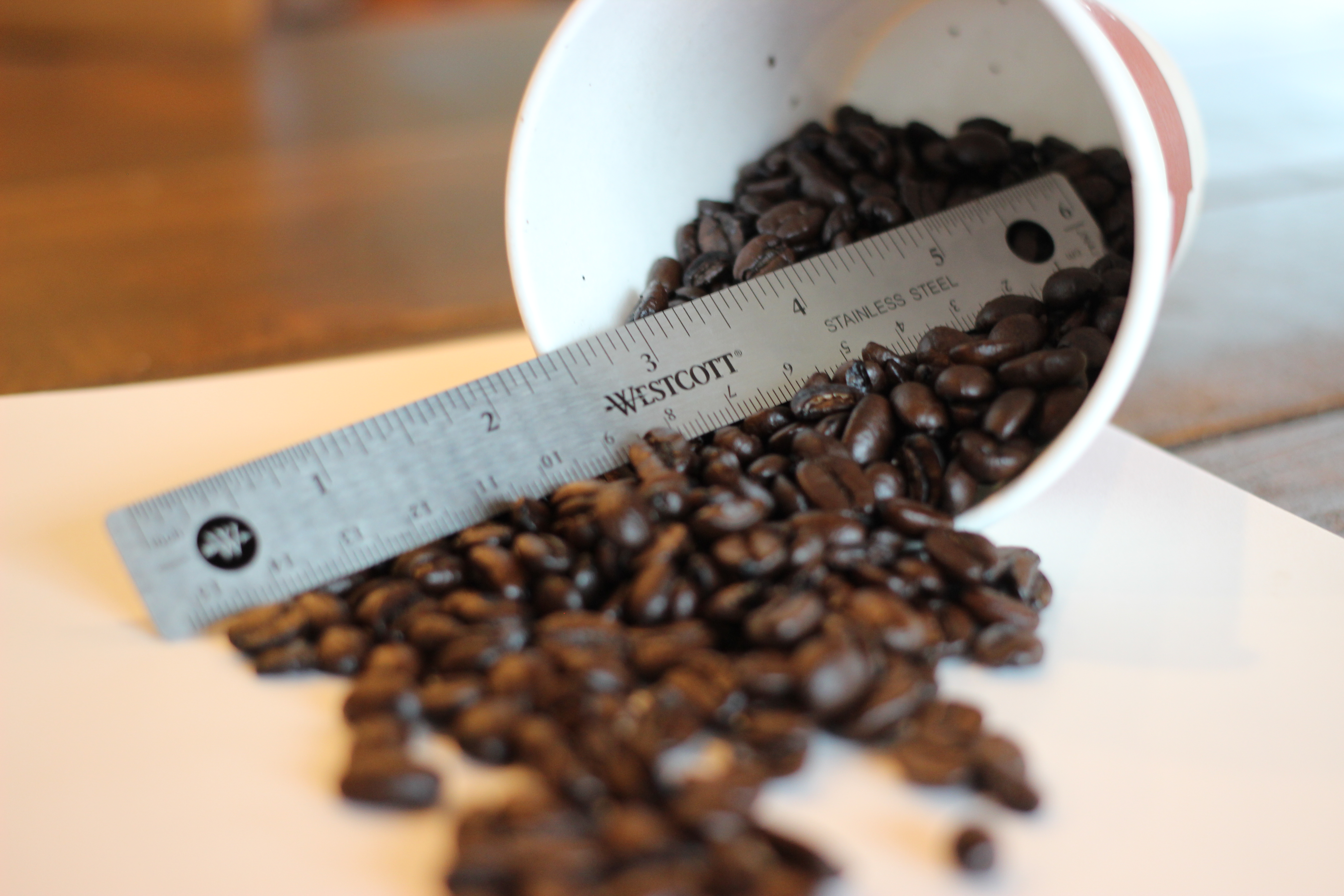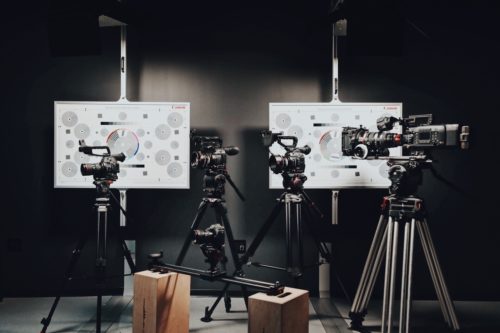SXSWi media observations: Austin on the edge
A lot like the month of March, South By Southwest Interactive roared in like a ravenous lion but teetered away like an uncertain lamb. SXSWi still maintains a special place in the...
Filter by Category
A lot like the month of March, South By Southwest Interactive roared in like a ravenous lion but teetered away like an uncertain lamb. SXSWi still maintains a special place in the...
Posted by provercoffee
Chances are good that if you visit any number of popular Internet news outlets like BuzzFeed, Thrillist, and The Huffington Post then you have seen a listicle about some topic or...
Posted by provercoffee
[youtube=http://youtu.be/eM14BdfWQVc]Who did you think won or lost at the PR Oscars last night? Was it Eddie Redmayne’s unbridled boyish excitement at winning best lead actor...
Posted by provercoffee
The film adaptation of Fifty Shades of Grey dominated this weekend’s Box Office in a perfect storm of steamy eroticism and Valentine’s Day, which, by the way, is the one day of...
Posted by provercoffee

Anybody who didn’t spend four hours to watch the Grammys last Sunday let me summarize the important parts for you: Beck beat Beyonce out for Album of the Year. Kanye rushed the...
Posted by provercoffee

A lot of attention is paid to press releases and how to write them just so in hopes of getting a journalist to cover your news. Yet few marketing professionals and business owners...
Posted by provercoffee
Move over sales jockeys and marketing mavens, PR can teach you a thing or two about how to drive new sales. Just because it’s a challenge to measure and doesn’t have a lead gen...
Posted by provercoffee
The Super Bowl is a lot of things. Equal parts sport and spectacle. Advertising’s time to score or take a sack. A halftime show populated by music icons. Probably the biggest...
Posted by provercoffee

Lately brands have been paying a lot of attention to the measurability of marketing. The goal is simple: find metrics that give an accurate reading on how effective different...
Posted by provercoffee

Working with a PR firm can be an exhilarating time for a company (or nonprofit). PR can put you in the public eye like no other marketing activity. Indeed, your first time on...
Posted by provercoffee
 A lot like the month of March, South By Southwest Interactive roared in like a ravenous lion but teetered away like an uncertain lamb.
A lot like the month of March, South By Southwest Interactive roared in like a ravenous lion but teetered away like an uncertain lamb.
SXSWi still maintains a special place in the startup pantheon, thanks in no small part to legendary startup launches like Twitter and, to a lesser degree, Foursquare.
For several years running brigades of reporters from well-known media outlets like CNN, Wall Street Journal and Inc. combed the Austin Convention Center for the next hot startup to capture the social zeitgeist through cutting-edge tech and pitch-perfect social optics. Jimmy Kimmel even managed to squeeze in a second SXSW appearance, with a mildly funny pro-bono commercial for Vulcan Video that co-starred Austin’s own Matthew McConaughey.
Meerkat on the loose
Fortunately this year SXSWi saw another Twitteresque moment. Meerkat, a mere one month old video streaming startup, catapulted into our consciousness in part because of a pre-SXSWi snub by none other than Twitter. Stories of techies and celebs like Julia Louis-Dreyfus using Meerkat to record their time in Austin began circulating on The Verge and other outlets. Thankfully, Austin’s homegrown tech event was ground zero for another successful startup moment. [Cue sighs of relief and high-fives from SXSWi organizers.]
What has yet to be determined, however, is whether Meerkat’s breakout success is enough to keep the excitement (and hype) of SXSWi high enough to keep drawing media from around the world to find the latest hot startups.
South By Snooze-west
Any attendees of this year’s SXSWi couldn’t help but notice how muted and laid-back it felt compared to past events. Gone were the corporate buses bedecked with all manner of eye-catching designs hosting private meetings into the wee hours. Gone were the big consumer brands like Doritos taking over swaths Austin with live concerts and over-the-top branding gimmicks. Gone were ambitious publicity stunts put on by aspiring startups.
Perhaps a tad more disturbing about this year, however, was the conspicuous absence of big-named media outlets. CNN didn’t have a live news crew broadcasting from uShip’s 2nd Street office. NBC had a party on Saturday but nary a camera with the NBC logo could be seen filming SXSWi. I spotted a Wall Street Journal reporter doing drive-by booth interviews on the tradeshow floor, a Verge reporter giving an interview at Houndstooth, a VentureBeat reporter pulling a part-time gig at a booth, but not the reporter feeding frenzy of years past. Not even local TV news crews made more than cursory stops at the Interactive festival.
Perhaps too the lack of circus-like theatrics and pop-up corporate events took a little spring from the giant event’s steps. Or maybe eight years removed from Twitter’s big reveal combined with a slew of “uber” successful Silicon Valley startups and their brash, young millionaires (behaving like brash, young millionaires) has tarnished the event’s former luster in the media’s eyes. How many more stories of well-to-do, Stanford educated boy-preneurs raising $100 million in venture capital can we get excited about?
One huge elephant in the room is the financial trials and tribulations suffered by most traditional media – often at the hands, ironically enough, of the startups SXSWi promotes. If traditional media – and by that I mean newspapers and magazines, TV and radio, and even online news outlets – continue hemorrhaging advertising revenue at the current rate then there may come a time when few reporters will be around to cover the event. Yet without reporters to record SXSWi’s latest breakout technologies then how far and fast will a startup rise? After all, one of the primary ingredients of a startup’s rocket fuel is publicity in media outlets of all kinds: Inc., New York Times, Austin Business Journal, CNN, Wall Street Journal, etc.
Then there was the terrible tragedy during SXSW Music last year. A drunken motorist mowed down over a dozen festival goers, killing four in the process. In response to the tragedy, the City of Austin drastically reduced the number of special events permits for SXSW 2015, which effectively put a brake on the event’s past growth and stole the bacchanalian vibe that appealed to geeks and hipsters alike.
Austinites have a Love-Hate relationship with events like SXSW. They put us on the map, made us cool in the eyes of both media and tech startups. Seemingly overnight we became the darling of a nation struggling with Recession and tired of two drawn-out wars. Austin was a unique place in a unique time, where liberalism could co-exist with entrepreneurial dreams, where the Austin motto of keeping it weird could at the same time turn a profit. SXSW, ACL, Fusebox, Moontower – all represented the live performance experience Austin does so well, perhaps better than any other part of the country.
Austin opened its arms in a wide embrace of those seeking its cool, enthusiastic, keep-it-real lifestyle. It has experienced palpable growth pains and challenges to the notion that raucous growth is sustainable or even worthwhile. A rapidly growing population, a traffic problem that promises to rival L.A.’s, and a prolonged drought that is drying up the surrounding lakes and aquifers – all are issues weighing heavily on the minds of Austinites who have watched with wonder (and worry) as their city has transformed seemingly overnight into a major metro.
SXSW perhaps best exemplifies the struggle to balance growth without burning through the goodwill and resources of its founding city. The issues of unchecked growth came to a head last year, with the aforementioned tragedy during SXSW Music, and it forced the Austin city council to make bold moves to ensure the safety of citizens and visitors alike at SXSW, which included closing off more streets, adding more police and solid barriers and clamping down on the often unpredictable pop-up events that made crowd control such a dicey proposition in past years.
The actions Austin took were necessary, and perhaps should have been made a couple years ago. The toll a major festival like SXSW takes is both visible and invisible. Traffic snarls from closing downtown exits off I35 (already one of the most congested roadways in Texas), restaurants and coffee shops taken over by corporations for their VIP events, crowded streets, inflated parking prices (when you can find them) – all weigh on the collective minds of Austinites who do their best to gird themselves every year for a nearly constant stream of festivals. Some call it Festival Fatigue, others call it a pain in the ass. Bottom-line, SXSW brings both good and bad every year when it plays host to over 50,000 tech, music and film fans.
Brands in flux
There is no going back to the “innocent” days of SXSWi where Twitter made its electric debut, corporate brands blitzed us with music, food, booze and celebrity, and media flocked to the spectacle to marvel at fresh-faced tech geniuses and the darling, “undiscovered” city that Austin used to be.
A-list BBQ joint Franklin Barbecue now has a three hour long wait (best bring a chair, bro). Academy Award winner Matthew McConaughey sold out to Lincoln. Tour De France defrocked Lance Armstrong for lying and cheating his way to six yellow jerseys.
Add to that property values which have steadily veered northward year over year at dizzying rates and gentrification that is rife in east Austin, forcing poor and low-income residents out of neighborhoods they grew up in, and traffic that threatens to turn a commute from Round Rock to downtown into a two-hour, one-way odyssey from Hell, and you see a city grappling with its own success.
Don’t forget the media helped build up Austin into the near mythical status it still holds today. Austin made it to the top of about every known list: top restaurants, top chefs, top small business ecosystems, top schools, top food trucks, top bars, and on and on.
Indeed, the media did such a good job of selling the gospel Austin’s cool, hipster, laid-back lifestyle and business culture that it seduced a generation of Americans. From Heavily tattooed millennial dudes sporting manicured beards and clothing straight from JackThreads to well-heeled retirees cashing out of homes in California for a condo off Congress, over 150 converts make their way to Austin every day!
SXSW and Austin are on the verge of…
Could drought derail the much-touted Texas Miracle and wreck Austin’s cachet? Will the media report the cracks in the Austin foundation because as much as it loves to heap praise on undiscovered novelties it also likes to expose excess, abuse and greed? Will the media ever return to SXSW in the same numbers reporting on how wonderful the world of tech and Austin’s startup culture are for Americans seeking a (better) life?
It’s hard not to answer in the negative. Especially if you never knew the true magic of Austin before the rampant growth, back when Hamilton Pool was still in the country, and you could find parking in the Barton Springs parking lot during the summer, and you could cross South Congress at Annie Street and pause mid-way to admire the view of the Capitol without fear of getting clipped by an harried driver.
Times have changed for both event and city and there is no going back, only forward. The question is how will we ensure that SXSW continues its storied run, Austin continues to innovate in its quirky, weird way and media keep coming to discover Austin’s many endearing eccentricities.
The future is in our hands.
About Dave Manzer: In 2009, Dave Manzer founded Swyft, an Austin PR & digital marketing agency for startups and fast-growth businesses. His team specializes in highly integrated PR & inbound marketing strategies that help B2B tech companies around the world reach their goals in brand awareness and revenue growth. If you have any PR questions about your startup or small biz, feel free to tweet him at @davemanzer or email him at dave@growswyft.com.

Trying to gain awareness for your startup can seem like an overwhelming task at first. There are so many startups trying to get in the news in hopes of propelling their growth....

You’ve reached an exciting point for your business! You’ve been approached by the media to participate in an interview about your company. This can be both exciting and nerve...